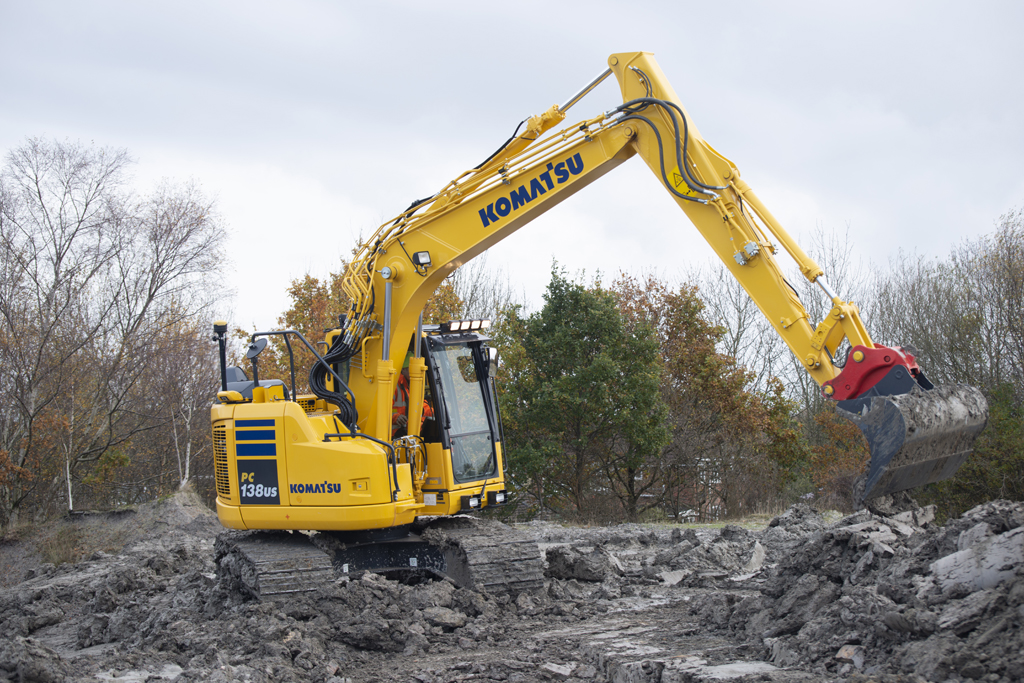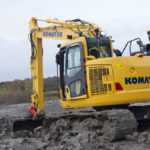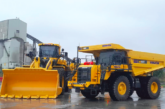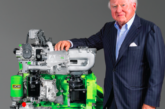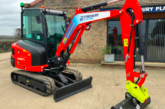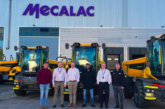The Komatsu PC138US-11 is extending the concept of intelligent machine control still further. Dan Gilkes reports.
Machine control and machine guidance systems are, increasingly, becoming an essential part of a plant companies fleet offering. By providing operators with guidance and automated control systems, contractors can reduce the amount of setting-out on site, cut waste through over-digging and supply of fill materials, save on fuel and improve productivity.
Komatsu has been at the lead of this revolution in machine control, offering a growing number of iMC machines, with Topcon-based machine control built in at the factory. In terms of crawler excavators, that initially meant the 21-tonne PC210LCi-11, which uses a factory-installed machine control system that includes sensors on the machine’s hydraulic cylinders. The PC210 machine was joined this year by the larger 36-tonne PC360LCi-11, providing an automated solution for muck-shifting and heavy earthmoving customers. A 30-tonne PC290LCi-11 will be added to the line-up early next year, again meeting the demands of heavy excavation companies.
However, while the potential savings for a company involved in bulk earthworks are undeniable, many excavator users would also like to see those benefits with smaller models, particularly in the most popular 13 – 14-tonne sector. To meet the needs of this customer base, UK Komatsu distributor Marubeni-Komatsu has also joined forces with Topcon, to provide a 3D machine control system for the Komatsu PC138US-11.
This reduced swing 14-tonne machine has become an increasingly important seller for Marubeni-Komatsu in the UK, as it offers a digging solution for a wide range of applications, from house building to urban infrastructure. Powered by a 97.3hp (72.6kW) Komatsu engine, the PC138US-11 is available with a choice of mono-boom or two-piece main booms, plus a selection of dipper arm lengths.
It offers a short tailswing of just 1.48m, making it an ideal excavator for confined urban job sites or for road maintenance. However, despite its compact external dimensions, the machine benefits from a full size Komatsu SpaceCab, providing a comfortable operating environment with excellent all-round visibility. By offering machine guidance and automated control on a model of this weight, Marubeni-Komatsu is potentially delivering heavy machine benefits to a much wider audience.
The Topcon X-53X Automatic system provides on-screen guidance or, in automated setting, full control of the boom, dipper and bucket, allowing machine operators to rapidly follow 3D designs without over-digging. Once set, simply pulling in on the dipper arm lever, sees the bucket smoothly follow the desired grade, with the boom height and bucket angle automatically adjusting to maintain that cut.
The system also provides what Topcon calls a Working Window feature. This allows the operator to set a desired distance above finished grade, which can be adjusted to suit soft soil or harder materials. As the bucket enters the Working Window, it automatically engages the automated digging function, to follow the finished grade height.
The system, which for now can only be installed on a new machine, rather than being retro-fitted on an older model, includes a separate electronic pilot valve that is mounted beneath the excavator’s cab. This valve, is tied into the servo levers’ pilot hydraulic lines and it takes signals from four internia movement sensors. These provide positioning information regarding the excavator body, the main boom, the dipper arm and the bucket, providing a six-axis picture of the machine’s exact position.
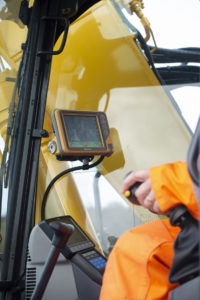 The excavator gets replacement Topcon servo lever heads in the cab, with up to six buttons on the right-hand lever. Three of these buttons are for the regular Komatsu commands, while three can be assigned to the Topcon control systems. In addition, there is a Topcon control screen for the cab and there are twin GPS receiver antennae mounted on the rear of the excavator’s upperstructure.
The excavator gets replacement Topcon servo lever heads in the cab, with up to six buttons on the right-hand lever. Three of these buttons are for the regular Komatsu commands, while three can be assigned to the Topcon control systems. In addition, there is a Topcon control screen for the cab and there are twin GPS receiver antennae mounted on the rear of the excavator’s upperstructure.
The excavator has to be configured for each bucket that is going to be used by the machine, as the information includes the individual dimensions and the weight of the bucket. However, once the data is loaded, it is possible to change between known buckets without the need for additional set-up requirements. At present the system will not function with a tilt/rotate mount, though this feature is believed to be coming next year.
Information can be automatically downloaded from the site engineers’ design programme, providing the operator with a 3D graphic representation of the required digging profile on the screen. This allows for rapid changes of design if required, as they can be sent straight to the system from a remote location. The operator can then dig to grade following the graphics on the screen, or by holding a combination of buttons on the left-hand servo lever, can simply crowd in the dipper am and the automatic system will control boom height and bucket angle to maintain the desired finish grade.
Topcon claims that the automated system will make an experienced operator more productive and will allow a less experienced operator to dig like a pro. Certainly, once set up, it would seem to provide an automated digging solution that is accurate to within 25-30mm.
Once installed, there are no regular service requirements. However, both the excavator owner and Topcon can access the system remotely, using a smartphone app and a web-based support system. This allows for remote diagnosis and monitoring of the system, reducing the need for a service engineer to attend site to problem solve.
As mentioned, automated machine guidance and control is becoming increasingly popular with contractors, with plant hire companies also keen to offer excavators with guidance systems when required. While it will no doubt take a little longer for the system to pay for itself on a smaller machine than on a 21-30 tonne model, the improvements in productivity and operator performance, along with the potential reduction of wasted material through over-digging, should result in a rapid return on investment. More importantly for Marubeni-Komatsu, being able to offer the system on a popular 14-tonne model will make the PC138US-11 even more relevant for those customers shopping for a new excavator at this weight.
